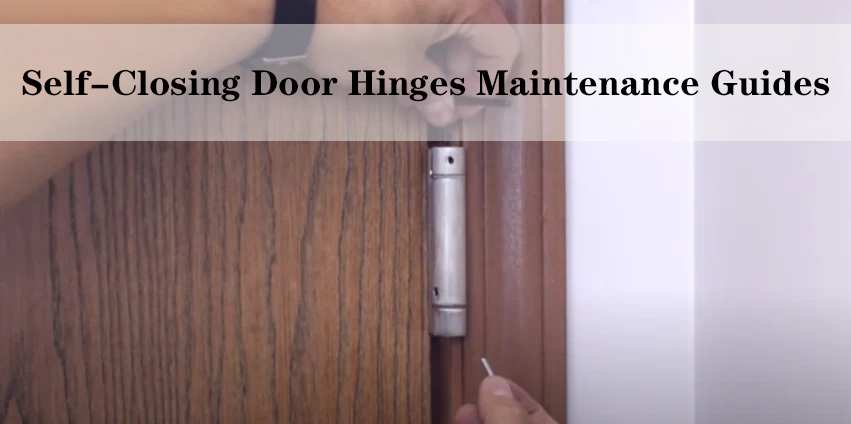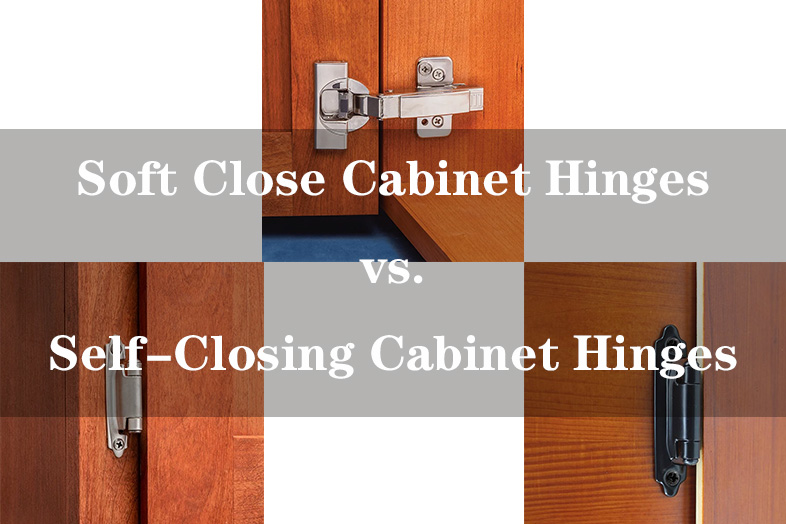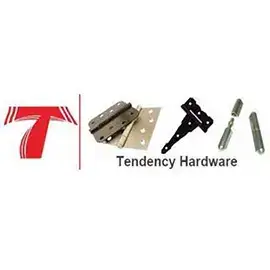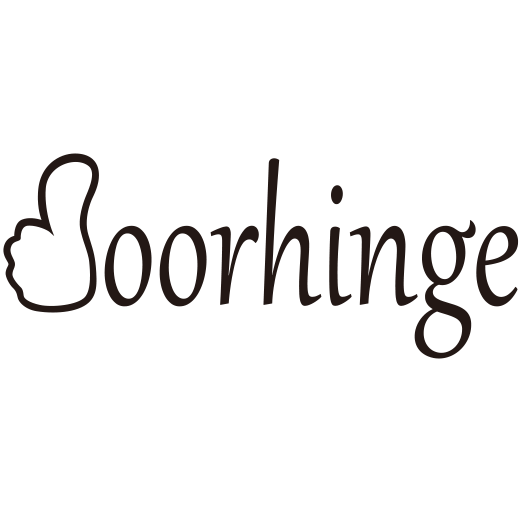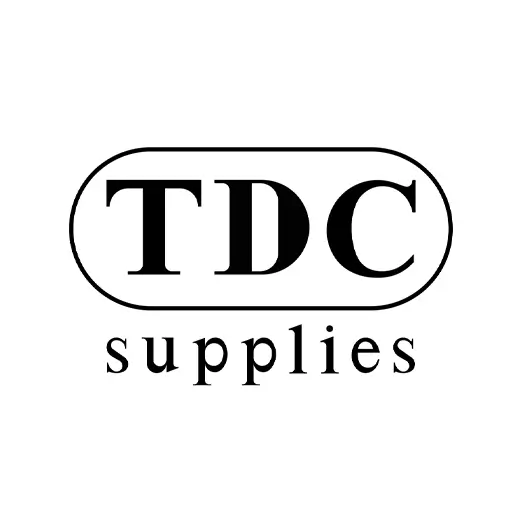Door hinges may seem like simple hardware elements, but they play a crucial role in the functionality and aesthetic of doors. Broadly, hinges can be categorized into two types: self-closing door hinges and common (or standard) door hinges. Self-closing hinges are designed to automatically close the door after it has been opened, using various mechanisms like springs or hydraulic systems. Common door hinges, in contrast, are the traditional type, requiring manual effort to open and close the door. These come in various designs, such as butt hinges, pivot hinges, and concealed hinges, each serving different purposes in residential and commercial settings.
The purpose of this comparison is to provide a detailed understanding of the differences between self-closing door hinges and common door hinges. By examining aspects like functionality, safety, energy efficiency, cost, and aesthetics, we aim to assist homeowners, builders, and architects in making informed decisions about the most suitable hinge type for their needs. This comparison also seeks to highlight the evolving nature of door hardware technology and its impact on everyday living.
1. Understanding Door Hinges
What Are Self-Closing Door Hinges?
Self-closing door hinges are a modern type of hinge equipped with a built-in mechanism that ensures the door closes automatically after being opened. This mechanism can be a spring or a hydraulic/pneumatic system. The tension in these hinges is adjustable, allowing the closing speed to be modified according to user preference or safety requirements. These hinges are commonly used in commercial settings, such as restaurants and hospitals, and in residential applications, especially in areas where it’s crucial to keep doors closed, like in homes with young children or pets.
What Are Common Door Hinges?
Common door hinges, or standard hinges, are the traditional form of hinge used in most buildings. They are simple in design and function, lacking the self-closing feature. These hinges are typically made of two metal plates connected by a pin or rod, allowing the door to swing open or closed. The most common types include butt hinges, which are used in most residential doors, and ball-bearing hinges, which are better suited for heavier doors. These hinges require manual operation and do not close automatically.
2. Functionality and Ease of Use
Mechanism of Self-Closing Hinges
The mechanism behind self-closing hinges is what sets them apart. In spring-loaded hinges, the tensioned spring applies a closing force to the door as it opens, which gently pulls the door back to its closed position. Hydraulic and pneumatic self-closing hinges use fluid or air pressure, respectively, to achieve the same effect. This design not only facilitates automatic closing but also allows for control over the closing speed and force, which can be crucial in ensuring safety and noise control.

Standard Hinge Operation
Standard hinges operate on a simple mechanical principle, allowing a door to pivot open or closed around a fixed axis. The absence of an automatic closing mechanism means that these doors remain in the position they were last left, whether fully open, closed, or ajar. While this may seem like a limitation in some scenarios, it also provides simplicity and reliability. These hinges are easier to install and maintain since they do not contain the additional components required for automatic closing.
3. Safety and Security Considerations
Safety Features of Self-Closing Hinges

Self-closing door hinges significantly enhance safety in various environments. One of their primary benefits is in preventing accidents, especially in homes with young children or pets. By ensuring that doors close automatically, these hinges eliminate risks associated with open doors, such as children wandering into hazardous areas like kitchens or staircases. Additionally, self-closing hinges help in fire safety. By automatically closing doors, they can prevent the spread of fire and smoke, compartmentalizing areas and potentially saving lives and property. This feature is particularly valued in commercial buildings where fire safety is a paramount concern.
Security Implications
From a security standpoint, self-closing door hinges offer a layer of protection often overlooked. Doors that close automatically ensure that entry points are not inadvertently left open, reducing the risk of unauthorized access. This feature is crucial in settings where security is paramount, such as offices, hotels, and even residential properties. For instance, a self-closing hinge on a back door or a gate can be a deterrent to potential intruders, as it eliminates the chance of forgetting to close these entry points.
4. Energy Efficiency and Environmental Impact
Self-Closing Hinges and Energy Conservation
Self-closing door hinges contribute significantly to energy conservation. By ensuring doors are consistently closed, they play a crucial role in maintaining the efficiency of heating and cooling systems. This automatic closure prevents air from escaping or entering a room, thereby maintaining a consistent temperature. This feature is particularly beneficial in buildings where environmental control is essential, such as in climate-controlled warehouses, homes, or office buildings. Over time, the energy saved translates into reduced utility bills, marking these hinges as a smart choice for energy-conscious consumers.
Environmental Benefits
The environmental impact of self-closing door hinges extends beyond just energy conservation. By improving the efficiency of heating and cooling systems, these hinges indirectly reduce the carbon footprint of buildings. A smaller carbon footprint means a lesser impact on global warming, making self-closing hinges an environmentally friendly option. Additionally, their durability means fewer replacements and less waste over time, contributing to a more sustainable approach in building design and maintenance.
5. Aesthetic and Design Flexibility

Design Variations in Self-Closing Hinges
Self-closing door hinges are not just functional but also come in a variety of designs to complement modern aesthetics. These hinges are available in multiple finishes, such as brushed nickel, brass, or matte black, allowing them to blend seamlessly with various door styles and decor themes. Some designs are sleek and barely noticeable, while others can be more pronounced, adding to the door’s aesthetic appeal. This versatility makes them suitable for both contemporary and traditional settings, where functionality need not compromise style.
Aesthetic Appeal of Common Hinges
Common door hinges, while lacking in some of the advanced features of self-closing hinges, offer their own aesthetic value. They are available in a wide range of styles, from classic to modern, and can be selected to match or contrast with the door and room decor. For example, ornate hinges can add a touch of elegance to traditional doors, while simple, clean-lined hinges suit a minimalist or modern decor. This flexibility allows homeowners and designers to choose hinges that not only serve their primary purpose but also enhance the overall look of the space.
6. Installation and Maintenance
Installing Self-Closing Hinges
Installing self-closing door hinges is a process that, while slightly more complex than installing standard hinges, can be accomplished with some basic tools and a bit of DIY know-how. Key steps include:
Removing Old Hinges: If replacing existing hinges, carefully remove them, ensuring not to damage the door or frame.
Positioning New Hinges: Align the self-closing hinges with the door and frame, marking the screw holes.
Drilling Pilot Holes: Drill pilot holes for the screws to prevent wood splitting.
Attaching Hinges: Screw the hinges into place, ensuring they are tight and aligned.
Adjusting Tension: Self-closing hinges often have tension pins or screws that need to be adjusted to control the closing speed.
Maintenance Comparison
While both self-closing and common hinges require basic maintenance like regular cleaning and lubrication, self-closing hinges demand a bit more attention:
Tension Adjustments: Periodically, the tension settings may need readjustment to ensure the door closes properly.
Wear and Tear: The internal mechanism of self-closing hinges might wear out faster, necessitating more frequent checks.
7. Cost Analysis and Value
Initial Cost and Long-Term Savings
The initial cost of self-closing hinges is higher than that of standard hinges due to their complex mechanism. However, the long-term savings can be substantial, particularly in terms of energy conservation and potential safety-related costs.
Value Assessment
When assessing the value of self-closing hinges, consider factors like:
Energy Efficiency: Reduced air leakage and temperature control contribute to lower energy bills.
Safety Enhancements: Particularly valuable in homes with children or elderly, reducing accidents.
Durability: High-quality self-closing hinges can last many years, offsetting the initial investment.
8. Use Cases and Applications
Ideal Scenarios for Self-Closing Hinges
Self-closing hinges are ideal in various scenarios, including:
Child Safety: In homes where it’s crucial to keep certain doors closed to ensure child safety.

Commercial Buildings: In offices or public buildings where doors must remain closed for security or privacy.
Energy Conservation: In environmentally conscious settings, where maintaining room temperature is essential.
Common Hinge Applications
Common hinges are suitable for:
Residential Homes: Where cost and simplicity are more important than additional features.
Low-Traffic Areas: In parts of a building where door usage is minimal.
9. Pros and Cons Summary
Advantages and Disadvantages of Self-Closing Hinges
Advantages:
Enhanced safety and security.
Energy efficiency.
Automatic closing feature.
Disadvantages:
Higher initial cost.
More complex installation and maintenance.
Strengths and Weaknesses of Common Hinges
Strengths:
Lower cost.
Simplicity and ease of installation.
Wide variety of designs.
Weaknesses:
No self-closing feature.
Limited contribution to energy efficiency.
Final Thoughts and Recommendations
In conclusion, the choice between self-closing and common door hinges should be guided by specific needs and scenarios. For those prioritizing safety, energy efficiency, and automatic operation, self-closing hinges are a worthy investment despite the higher initial cost. For applications where simplicity and cost-effectiveness are paramount, traditional hinges remain a reliable choice. Ultimately, the decision should align with the specific requirements and values of the user or institution.










